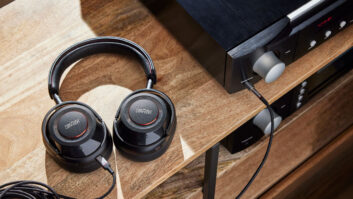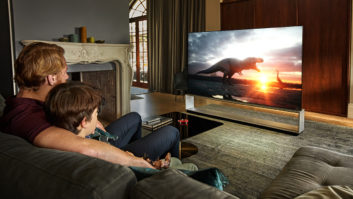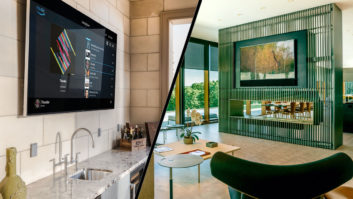What Can and Cannot Be Predicted for 4K/UHD, HDMI 2.0, and Content Streaming

With the end of one year and the start of another, pundits tend to see how their predictions from the previous year turned out while fearlessly making more prognostications for the year just starting.
For anyone in the orbit of the consumer electronics business, the annual International Consumer Electronics Show (CES) in Las Vegas serves to blend the two exercises together. A walk around the massive show floor will provide a reality check on what was shown earlier in the year in prototype form and new product announcements will stoke the fires for predictions for the new year.
I’ll try to refrain from predictions, but it is useful to take a moment this time of year to point to some trends that are already marching along to assess their potential to be either disruptive to your business, or if properly digested and handled, something you can use to properly manage and expand what you do in 2014.
4K/UHD
At least from the popular media perspective, perhaps the most visible product category at CES will be 4K/UHD. To the skeptics, it is something that manufacturers offer just as another way to sell new displays and yet another version of a movie format for consumers to own. To the supporters, the benefits of UHD in terms of not only resolution, but also with respect to color depth, higher frame rates increased color gamut, and more precise color sampling create a vastly improved image that is the next step forward in video presentation.

As is usually the case, the truth is somewhere in between. To be certain, UHD is a different kettle of fish than much-maligned 3D technology (and leave us not forget that 3D benefits from UHD as it may even lead to the holy grail of practical “glasses-free” 3D down the road.) In the short- to mid-term, the question has more to do with how many of the benefits of UHD will be available to consumers, in what time frame, and at what price. For instance, will we see flat-panels or projectors that deliver on the promise of 10- and 12-bit color? Will there be panels or projectors that deliver everything that ITU Rec. 2020 outlines? Will the scaling and panel quality of the emerging China-based brands improve to the point where they are able to challenge the mainstream brands at disruptive prices? Those are the things we don’t have the answer to at this point and will have to watch at CES and through the year to judge when the time is right to add UHD to the system for any particular client.
Of course, without true native content in 4K and the means to practically deliver it, the availability of displays almost becomes secondary. That is where you need to keep your eyes open for announcements of things such as 4K content via streaming services, via a new version optical disc format, or from either the incumbent cable and satellite services, or new start-ups using IP delivery. Will CODEC technology and device costs advance enough in capability and efficiency to allow both real-time encoding for live program delivery? Will sets, set-tops, and servers become available with HEVC, eyeIO, or some other high-efficiency/ low-loss CODEC? We’ll all have to wait and see.
Perhaps the one comment we can best offer in light of the above is to continually remind yourself and your clients that “4K,” UHDTV, or 2160P, whatever you choose to call it, is not just more resolution and new displays, it is an ecosystem with many moving parts. How many of those parts need to be in place for it to be viable for any one client or installation is something that you have to be prepared to decide, explain, and given the costs involved, perhaps even defend.
HDMI 2.0 and Connectivity in General
HDMI 2.0 is likely to be the technology that “you can’t live with and you can’t live without” as 2014 progresses. We’ll probably see it first in display products, particularly from the major TV brands, but it will be later in the year before it appears in projectors. Beyond that, CES will tell when it will spread to source products. Without 4K content, however, it really isn’t needed in a conventional Blu-ray player or media server.
In between the source and the sink, or display, in virtually any system you install will be the AVR or surround processor, and it is there that we’ll all have to wait to see when HDMI 2.0 appears. Of course, it is somewhat of a trick question, for as has been the case with previous incarnations of HDMI, the base standard is just that. The “trick” part will come from seeing how, if, and when the HDMI Forum and HDMI LLC groups will establish the marketing designations that will tell us and our customers exactly what an HDMI 2.0 device is capable of doing. Right now, we’re on our own, as well as being at the mercy of the manufacturers and the HDMI gods to let us know what we’re buying.
Remember that the format is capable of accommodating a wide range of “4K/UHD” formats from a minimum of 2160P/30p/8- bit color/4:2:2 sampling all the way up to 2160/60p/12-bit color/4:2:2 sampling or 2160/60p/8-bit color/4:4:4 sampling. What you will need to look for in the signal chain and AVR or processor’s HDMI capabilities will vary as to how future-proof you want the system to be or whether you don’t want to wait for the higher versions of HDMI in exchange for a faster implementation of the new standard and UHD compatibility. Hopefully, there will be some standardization to all of this, but only time will tell.

Of course, there are those saying that even the latest HDMI 2.0 format is not enough to accommodate the best that 4K/UHD can offer in terms of frame rate and color depth. Will DisplayPort or Thunderbolt ride to the rescue in the face of the ubiquity of HDMI? Good question. When will the growing momentum behind HDBaseT prompt that technology’s alliance to update the standard to at least pull even with, if not exceed, the full capability of HDMI 2.0?
OTT, Streaming, and Content Apps
In 2014 we will see the legacy program suppliers, including terrestrial broadcasters, cable, and satellite explore different ideas to retain their audiences. We may also witness more disruption from newer content suppliers, such as Netflix, Hulu, Aereo, and the rest of the expanding world of “TV everywhere” technologies. While our industry does not create or provide content, it certainly does facilitate it. Thus, we need to collectively keep one eye on the content and the other on how it will impact what we sell and install and how it is controlled. For example, if a system becomes dependent on a Roku, Xbox One, or PS4 for access to streaming services, how will it be controlled when the device uses WiFi Direct or Bluetooth rather than IP control?
Think of potentially disruptive products that merge IP delivery and OTA access such as Aereo or SimpleTV. Will you need to access these or similar through a Roku? A tablet? Via an app that lives inside the display? (Hint: Some of the TV brands may include an Aereo App in their next lines of products.)
What are the integration and control issues if Netflix moves from being accessed via in-set or non-traditional products and becomes an app on the cable box? Conversely, will this be the year we see disintermediation of traditional “pay channels” such as HBO if they allow access through a device that is not a cable or satellite STB via a direct subscription model? Currently, HBO Go is only accessible when you subscribe to the underlying service elsewhere, but who says that business model is carved in stone? Remember that the number of button presses to access a “channel” on something such as a Roku differs depending on what the last channel viewed was. Unless it expands the availability of direct-channel access or offers an open API, how can you predictably integrate that sort of control?
To top things off, will this be the “year of the dongle” for access to content? Chromecast is expanding its offerings, but you need a tablet, phone, or computer to drive it (at least for now). What will the effect be on systems as Chromecast scales from “kid’s room” to somewhere like a dedicated home theater? There has even been speculation that Aereo will offer a dongle-like product, or at the very least it is not out of the question to imagine using the browser on a tablet to access the Aereo signal and use a Cromecast to deliver it to the display.

Just for fun, there’s also talk of a Nexus set-top that might succeed where GoogleTV has perhaps not had the impact to which it might have aspired. Yippee! Something else to connect!
But wait, there’s more!
Beyond these major items to be on the look out for, here are yet more things that will influence your systems’ world in 2014.
• With all of these devices being connected will there be enough HDMI inputs to handle it all? Remember, with neither Xbox One or PS4 offering the backwards compatibility required to play Xbox 360 or PS3 games, respectively, an older system may have to stay where it is rather than be downgraded to another room in the house. Will the incumbent AVRs, processors, or displays in a given system be able to accommodate everything?
• This will likely be a year when more cable systems either go “all digital” or push some lesser viewed channels off to “switched digital.” That means that an older analog TV or even a newer flat panel with a clear-QAM tuner might no longer receive the client’s favorite channels without some sort of outboard adapter. Are you (and your customer base) prepared for the impact on existing sets?
• Will this finally be the year when OLED takes a reasonable place in the market. It is certainly on the way, and we’ll definitely see 4K/UHD sets using OLED technology. With plasma seemingly on the wane, will OLED take over as the high-end display of choice? Will we see not only 4K sets, but more flat, rather than curved, OLED models? This is definitely one to watch.
• Gesture and voice control are candidates for increased market traction this year after many years waiting at the alter. When planning new systems or upgrading existing ones, will you be able to accommodate both the sensor (think Xbox One and Kinect) and the means by which it is connected to the system rack? If you don’t someone else will.
• Consumer-grade networking products will no longer cut it when everything will require a persistent, high-speed connection. Not just wireless, but as 4K content comes into play, wired connectivity will regain popularity. As you sell a plethora of new connected devices, from door locks/cams to LED “cloud bulbs” to thermostats, is the infrastructure there to handle it all without crashing the system and allowing everyone in the house to stream with top-tier QOS? Don’t let frequent appearances of “buffering” popups and video blocking or freezes become the 21st century equivalent of “flashing 12:00” on a VCR.
Of course, this is only a small sampling of the product, system, integration, and business model challenges that we’ll all face in the year ahead. While it’s almost impossible to accurately predict what lies ahead, at least with a reasonable map, you have an idea where you are going, and knowing the “points of interest,” you’ll at least be able to set a good course for 2014. As is the case with any nav system or software-driven product these days, you need updates along the way to make sure you take the right course. Use the items above to start your own look ahead, and we’ll continue to provide the updates as the year progresses.
Michael Heiss is a contributing editor to Residential Systems. He lives in Sherman Oaks, CA.







